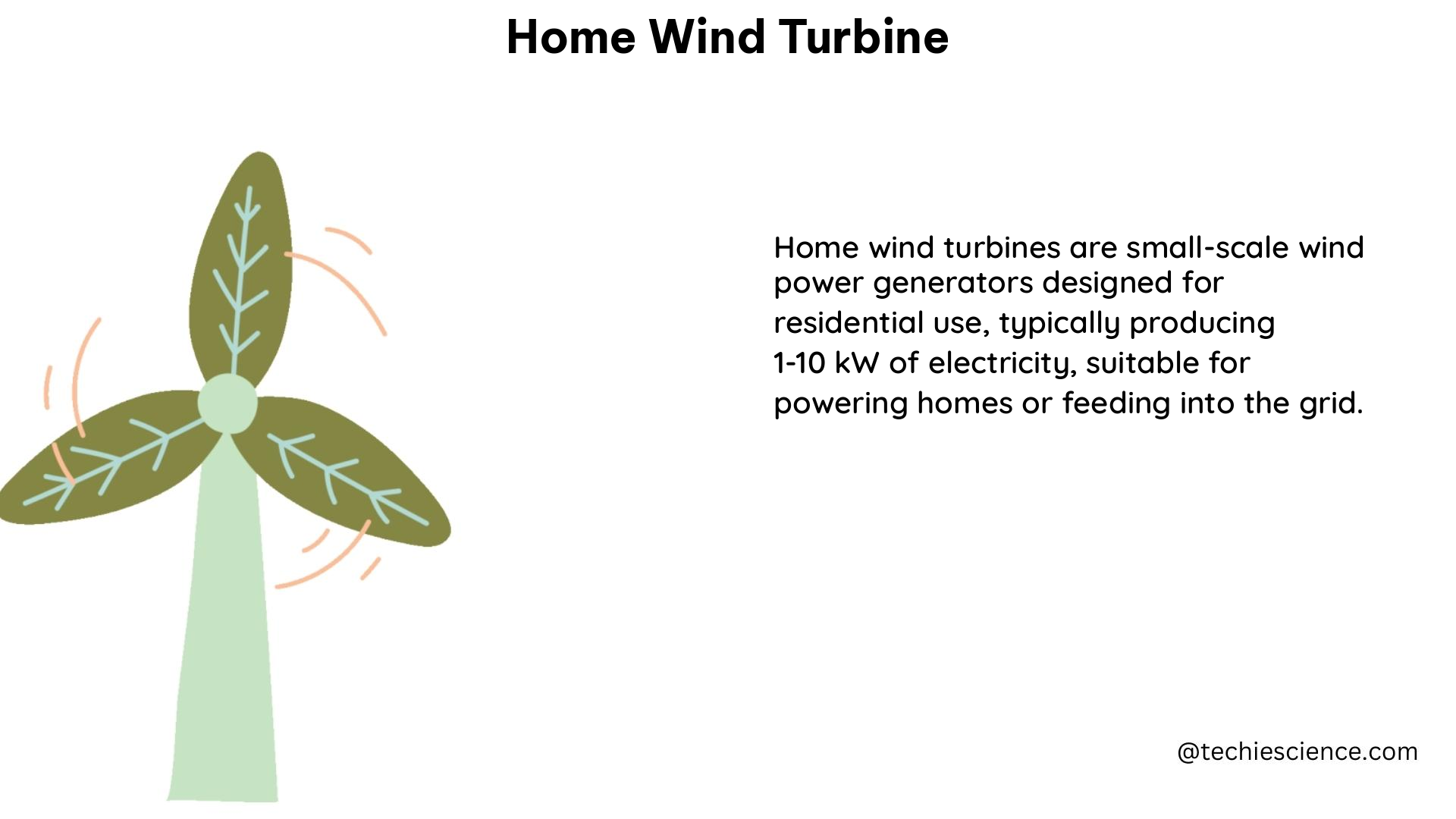Home wind turbines, also known as small wind electric systems, are designed to generate electricity for residential use. These systems typically consist of a wind turbine, a tower, wiring, and a controller. The wind turbine converts the kinetic energy of the wind into mechanical energy, which is then converted into electrical energy by the controller. The electricity generated can be used immediately, stored in batteries for later use, or fed back into the grid.
Assessing the Wind Resource
When considering a home wind turbine, it is crucial to evaluate the wind resource available at the site. The wind resource can vary significantly over an area of just 1 square mile due to local terrain, structures, and vegetation. To estimate the wind resource, you can:
- Consult a Wind Resource Map: These maps provide a general overview of the wind resource in your area, but they may not capture the nuances of your specific location.
- Obtain Average Wind Speed Information: Contact your local airport or weather station to get historical data on average wind speeds in your area.
- Use Vegetation Flagging: Observe the movement and direction of vegetation, such as trees and bushes, to determine the prevailing wind direction and speed.
- Install a Wind Resource Measurement System: Set up an anemometer and data logger at the proposed turbine site to collect detailed wind speed and direction data over time.
Technical Specifications of Home Wind Turbines

The technical specifications of a home wind turbine will depend on the specific model and manufacturer. However, some common specifications include:
| Specification | Description |
|---|---|
| Rotor Diameter | The diameter of the rotor, which determines the swept area and the amount of wind that can be captured. Typical rotor diameters for home wind turbines range from 2 to 20 meters. |
| Cut-in Wind Speed | The minimum wind speed at which the turbine begins to generate electricity, typically around 3-4 m/s (7-9 mph). |
| Rated Wind Speed | The wind speed at which the turbine generates its maximum output power, usually between 10-15 m/s (22-34 mph). |
| Cut-out Wind Speed | The maximum wind speed at which the turbine can safely operate, typically around 20-25 m/s (45-56 mph). |
| Power Rating | The maximum output power of the turbine, typically ranging from 1 to 20 kW for home wind turbines. |
| Tower Height | The height of the tower on which the turbine is mounted, which can affect the wind resource and the visual impact of the turbine. Typical tower heights for home wind turbines range from 9 to 45 meters (30 to 150 feet). |
Measuring the Power Output of a Home Wind Turbine
When measuring the power output of a home wind turbine, it is essential to follow best practices to ensure accurate and reliable results. This includes:
- Measuring Under Consistent Wind Conditions: Collect data during periods of stable wind speed and direction to minimize the impact of turbulence and gusts.
- Using Appropriate Loads: Connect the turbine to a load that accurately simulates the real-world conditions in which the turbine will operate, such as a resistive load bank or a grid-tied inverter.
- Maintaining Equipment Regularly: Ensure that all components of the measurement system, including the turbine, sensors, and data logger, are properly calibrated and maintained.
The key components of electrical power that should be monitored include:
- Voltage: Measure the voltage across the terminals of the turbine’s controller using a multimeter or data logger.
- Current: Measure the current flowing through the controller using a clamp-on ammeter or a data logger with a current input.
- Power: Calculate the power output by multiplying the voltage and current measurements.
When measuring the power output, it is also important to consider the wind speed and direction, as well as the turbulence and shear of the wind. These factors can significantly affect the performance of the turbine and should be taken into account when analyzing the data.
Conclusion
Home wind turbines are a viable option for generating renewable electricity for residential use. By understanding the wind resource, the technical specifications of the turbine, and the best practices for measuring power output, you can ensure that your home wind turbine is operating efficiently and effectively. With the right planning and implementation, home wind turbines can be a valuable addition to your renewable energy portfolio.
References:
- WINDExchange. (n.d.). Small Wind Guidebook. Retrieved from https://windexchange.energy.gov/small-wind-guidebook
- NREL. (n.d.). Wind Data and Tools. Retrieved from https://www.nrel.gov/wind/data-tools.html
- AutoMaxx Windmill. (2024, May 23). How to Accurately Measure Power Output from Your Wind Turbine. Retrieved from https://automaxxwindmill.com/how-do-you-measure-electricity-on-a-wind-turbine/
- U.S. Department of Energy. (n.d.). Planning a Small Wind Electric System. Retrieved from https://www.energy.gov/energysaver/planning-small-wind-electric-system
- Pico Technology. (n.d.). Measuring Wind Turbine Performance. Retrieved from https://www.picotech.com/library/application-note/measuring-wind-turbine-performance

The lambdageeks.com Core SME Team is a group of experienced subject matter experts from diverse scientific and technical fields including Physics, Chemistry, Technology,Electronics & Electrical Engineering, Automotive, Mechanical Engineering. Our team collaborates to create high-quality, well-researched articles on a wide range of science and technology topics for the lambdageeks.com website.
All Our Senior SME are having more than 7 Years of experience in the respective fields . They are either Working Industry Professionals or assocaited With different Universities. Refer Our Authors Page to get to know About our Core SMEs.